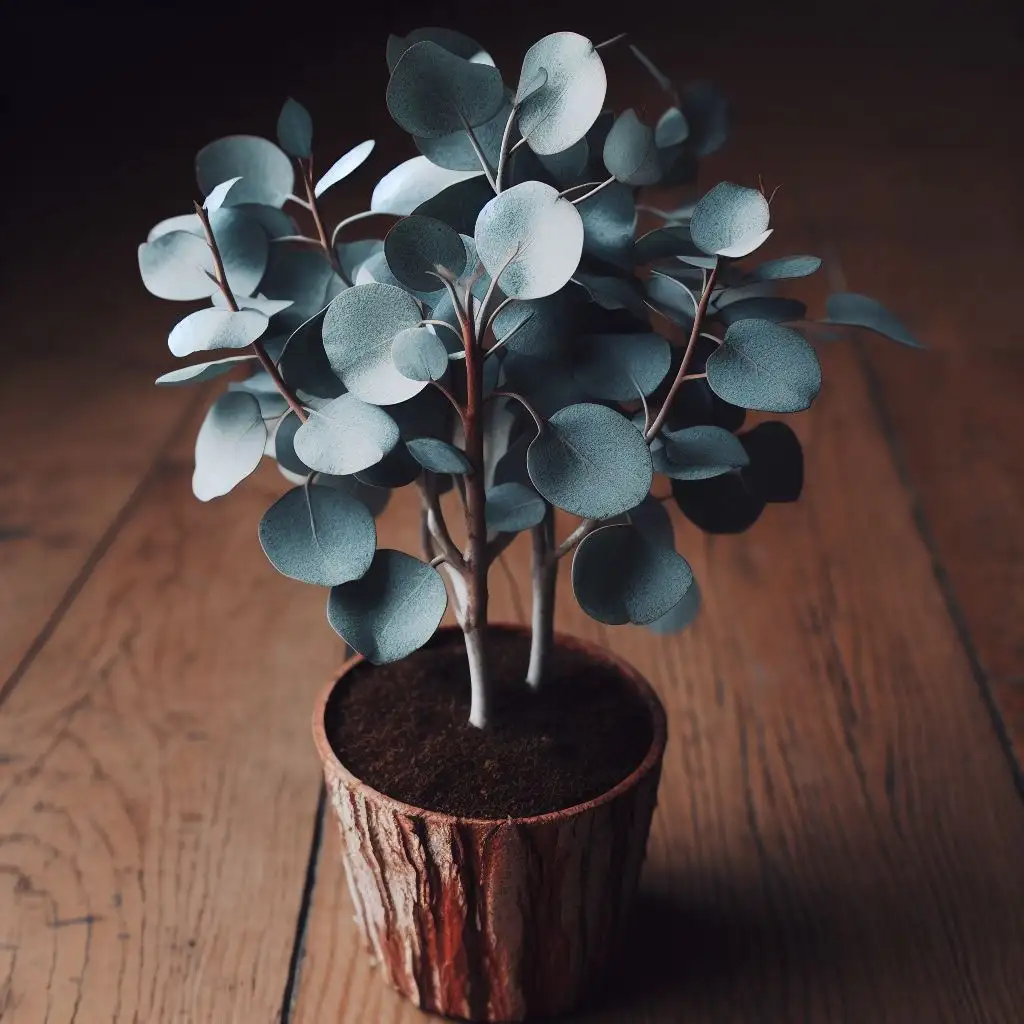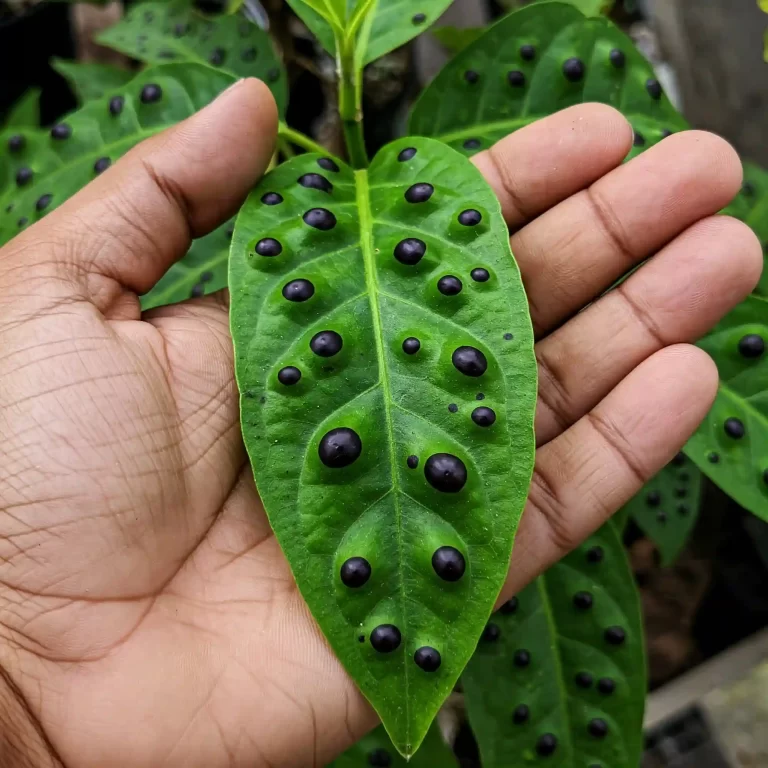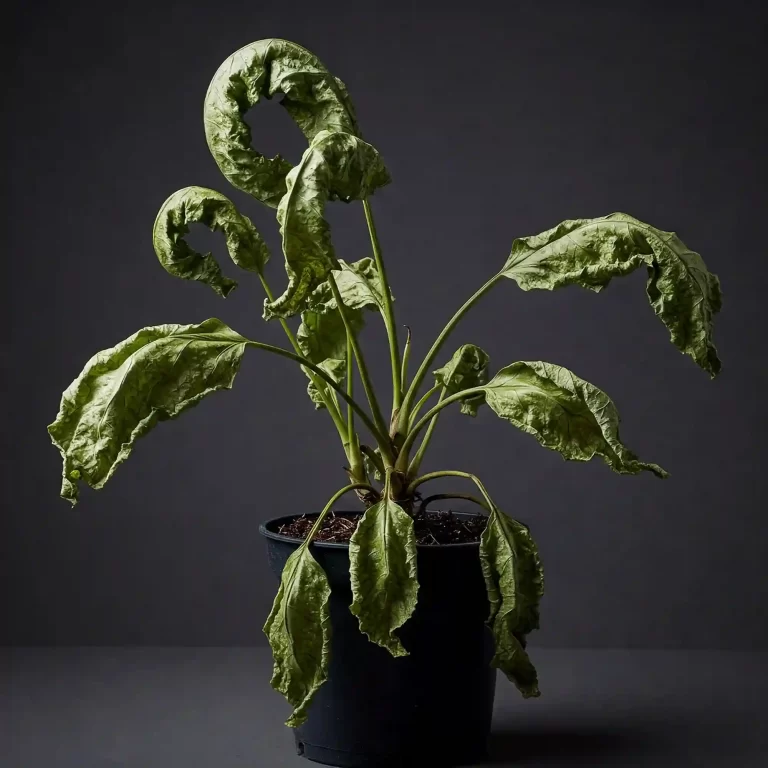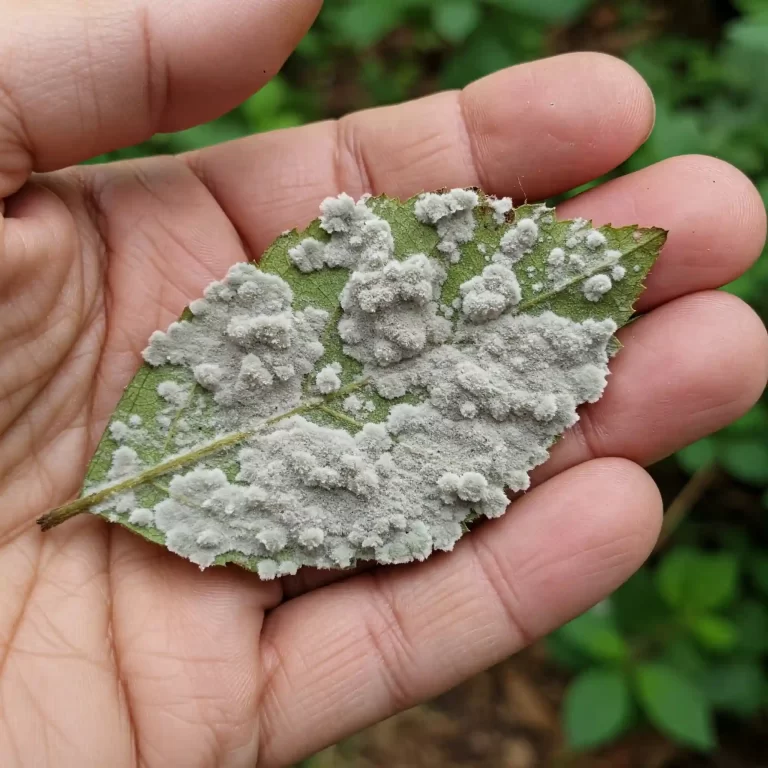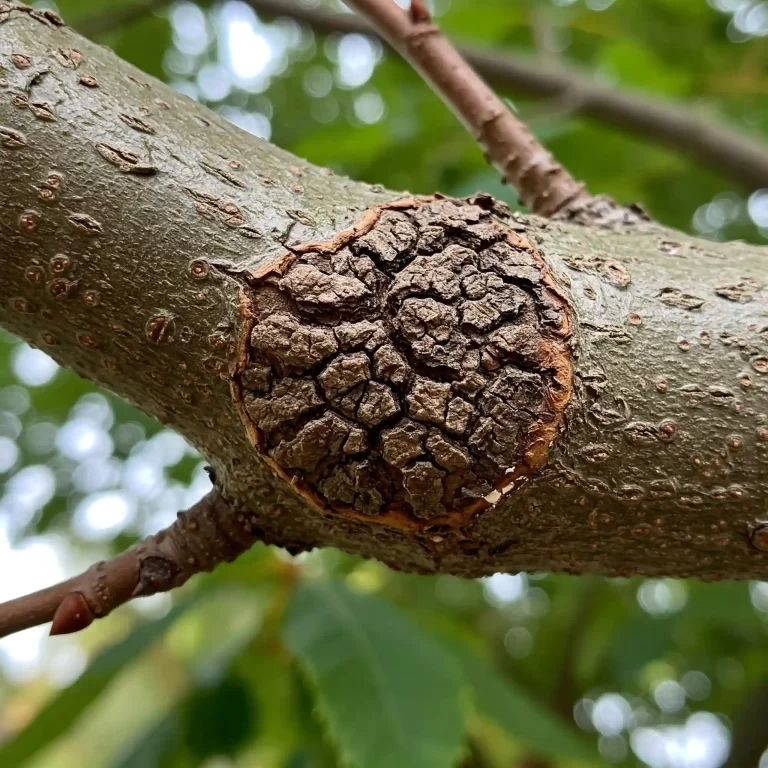Key Takeaways
| Light | Water | Soil | Fertilizer | Pruning | Pests and Diseases |
|---|---|---|---|---|---|
| Bright and direct sunlight | Regular but not soggy | Well-draining and neutral pH | Balanced and every three months | To maintain shape and density | Scale insects, spider mites, mealybugs, fungal diseases |
Glacier eucalyptus is a stunning and fragrant evergreen tree that can thrive in any climate. It has silver-blue leaves that smell like mint and eucalyptus, and it can grow up to 15 feet tall and wide. It is also winter hardy and can survive temperatures as low as -10°F.
But how do you grow and care for this amazing plant? What are the best conditions and practices to keep it healthy and happy? In this guide, you will learn everything you need to know about how to grow and care for glacier eucalyptus, the ultimate evergreen tree for your home and garden.
Light Requirements
Glacier eucalyptus loves bright and direct sunlight. It needs at least six hours of sun per day to grow well and produce its characteristic fragrance. Sunlight also helps the plant to develop its beautiful silver-blue color and prevent diseases.
If you are growing glacier eucalyptus indoors, you should place it near a south-facing window or under grow lights. Make sure the plant receives enough light throughout the day and avoid placing it in dark or shady areas.
If you are planting glacier eucalyptus outdoors, you should choose a spot that gets plenty of sun exposure. Avoid planting it under trees or buildings that might block the sun. You can also move the plant to a sunnier location if needed.
Some signs of insufficient or excessive light are:
- Yellowing, wilting, or scorching of the leaves
- Leggy or weak growth
- Loss of fragrance or color
- Susceptibility to pests or diseases
To fix these problems, you should adjust the light level accordingly. You can move the plant to a brighter or shadier spot, or use curtains, blinds, or shades to filter the light. You can also prune the damaged leaves and branches to improve the plant’s appearance and health.
Water Requirements
Glacier eucalyptus needs regular watering but does not like soggy soil. It prefers moist but well-drained soil that allows the excess water to drain away. Over-watering can cause root rot, fungal diseases, and leaf drop, while under-watering can cause drought stress, leaf curl, and leaf burn.
The best way to water glacier eucalyptus is to water it deeply once a week or when the top inch of soil feels dry. You should use room-temperature water and avoid wetting the leaves or the trunk. You should also reduce watering in the winter when the plant is dormant and needs less water.
Some signs of under-watering or over-watering are:
- Drooping, curling, or browning of the leaves
- Soft, mushy, or rotten roots
- Mold, fungus, or gnats on the soil surface
- Stunted or slow growth
To fix these problems, you should check the soil moisture regularly and water the plant accordingly. You should also make sure the pot has drainage holes and use a saucer or tray to catch the excess water. You can also repot the plant in fresh soil if the roots are damaged or the soil is too wet or dry.
Soil Requirements
Glacier eucalyptus prefers well-draining soil with a neutral pH level. It does not like soil that is too acidic or alkaline, as this can affect its nutrient uptake and health. It also likes soil that is rich in organic matter, as this can provide nutrients, moisture, and aeration for the roots.
If you are growing glacier eucalyptus in a container, you should use a high-quality potting mix with added perlite or sand for better drainage. You can also add some compost or worm castings to enrich the soil. You should avoid using garden soil, as this can be too heavy, compact, or contaminated for the plant.
If you are planting glacier eucalyptus in the ground, you should make sure the soil is well-drained and amended with organic matter. You can also test the soil pH and adjust it if needed. You can use lime to raise the pH or sulfur to lower it. You should aim for a pH level between 6.0 and 7.0.
Some signs of poor soil quality are:
- Stunted growth
- Nutrient deficiency
- Pest infestation
To fix these problems, you should improve the soil quality by adding organic matter, drainage materials, or pH adjusters. You can also fertilize the plant regularly to provide the necessary nutrients. You can also treat the pests with natural remedies or pesticides.
Fertilizer Requirements
Glacier eucalyptus benefits from regular fertilization during the growing season. It needs a balanced fertilizer that provides nitrogen, phosphorus, and potassium, as well as micronutrients such as iron, magnesium, and zinc. Fertilizing the plant can help it to grow faster, stronger, and healthier, and to produce more fragrance and flowers.
The best way to fertilize glacier eucalyptus is to use a balanced fertilizer with an NPK ratio of 10-10-10 or 20-20-20 every three months. You should follow the label instructions and apply the fertilizer to moist soil. You should avoid over-fertilizing the plant, as this can harm the roots and leaves.
Some signs of under-fertilizing or over-fertilizing are:
- Weak growth
- Pale or yellow leaves
- Leaf burn
To fix these problems, you should adjust the fertilizer amount and frequency accordingly. You should also flush the soil with water to remove any excess fertilizer. You can also prune the damaged leaves and branches to improve the plant’s appearance and health.
Pruning Requirements
Glacier eucalyptus can be pruned to maintain its shape and promote denser growth. It can grow up to 15 feet tall and wide, so pruning can help to control its size and prevent it from becoming too leggy. Pruning can also improve the appearance, health, and fragrance of the plant, and encourage new growth and flowering.
The best way to prune glacier eucalyptus is to remove any dead or damaged branches as soon as you notice them. You can also trim the plant to shape it and remove any unwanted or overgrown branches. You should use sharp and clean tools and make clean cuts at an angle. You should avoid pruning the plant too much or too often, as this can stress the plant and reduce its vigor.
Some benefits of pruning are:
- Improving the appearance, health, and fragrance of the plant
- Encouraging new growth and flowering
- Preventing diseases and pests
- Providing cuttings for propagation
Pest and Disease Control
Glacier eucalyptus is relatively resistant to pests and diseases, but it can be attacked by scale insects, spider mites, and mealybugs. These are small, sap-sucking insects that can damage the leaves and stems of the plant. They can also produce a sticky, honeydew-like substance that can attract ants and fungus.
The best way to prevent and treat pest problems is to provide adequate air circulation and avoid over-watering the plant. You should also inspect the plant regularly for any signs of infestation and use natural remedies such as neem oil or insecticidal soap to get rid of them. You can also wipe the leaves and stems with a damp cloth or cotton swab to remove the insects and the honeydew.
Some signs of pest damage are:
- Sticky, honeydew-like substance on the leaves or stems
- White, cottony masses or webbing on the leaves or stems
- Yellow, brown, or black spots or patches on the leaves or stems
- Curling, wilting, or dropping of the leaves
To fix these problems, you should treat the pests with natural remedies or pesticides and remove the affected parts of the plant. You should also isolate the plant from other plants to prevent the spread of the pests.
Glacier eucalyptus can also be affected by fungal diseases, such as leaf spot, anthracnose, or powdery mildew. These are caused by fungi that can infect the leaves or bark of the plant. They can cause black, brown, or gray spots, patches, or lesions on the leaves or bark, and reduce the plant’s health and beauty.
The best way to prevent and treat fungal diseases is to provide adequate air circulation and avoid over-watering the plant. You should also avoid wetting the leaves or the trunk when watering the plant. You can also use fungicides or baking soda to treat the diseases and prevent them from spreading.
Some signs of fungal diseases are:
- Black, brown, or gray spots, patches, or lesions on the leaves or bark
- Powdery, white, or gray coating on the leaves or stems
- Distorted, discolored, or dropped leaves
To fix these problems, you should treat the diseases with fungicides or baking soda and remove the affected parts of the plant. You should also isolate the plant from other plants to prevent the spread of the diseases.
Tips and FAQs
Here are some additional tips and frequently asked questions about the glacier eucalyptus plant:
- Repotting: You should repot the glacier eucalyptus plant every two or three years, or when the roots outgrow the pot. You should use a larger pot with drainage holes and fresh soil. You should also trim the roots slightly to stimulate new growth and prevent root-bound problems. Repotting can help the plant to grow better and healthier, and to avoid root rot and nutrient deficiency.
- Propagation: You can propagate the glacier eucalyptus plant from seeds, cuttings, or air layering. Seeds can be sown in spring or summer in moist and well-drained soil. Cuttings can be taken in late summer or early fall from healthy and mature stems. Air layering can be done in spring or summer by making a slit in a branch and wrapping it with moist moss and plastic. Propagation can help you to multiply your plant collection and share it with your friends and family.
- Toxicity: Glacier eucalyptus is toxic to pets and animals, especially cats and dogs. It contains a chemical called eucalyptol, which can cause vomiting, diarrhea, drooling, lethargy, and seizures. If your pet ingests any part of the plant, you should contact your veterinarian immediately. You should also keep the plant away from your pet’s reach and wash your hands after handling it.
- Size: Glacier eucalyptus can grow up to 15 feet tall and wide, depending on the growing conditions and pruning. It can be kept smaller by pruning it regularly and growing it in a container. You can also choose a dwarf variety, such as Eucalyptus gunnii ‘Little Boy Blue’, which can grow up to 6 feet tall and wide.
- Lifespan: Glacier eucalyptus can live for several years, depending on the growing conditions and care. It is a fast-growing plant that can reach its mature size in a few years. It can also survive harsh winters and droughts, as long as it is protected from frost and extreme temperatures. However, it can also be susceptible to pests and diseases, which can shorten its lifespan.
- Uses and Benefits: Glacier eucalyptus has many uses and benefits, both ornamental and medicinal. It can be used as a landscaping plant, an indoor decoration, a cut flower, or a dried arrangement. It can also be used to make essential oil, tea, or herbal remedies. It has antibacterial, antifungal, anti-inflammatory, and decongestant properties, which can help to treat colds, coughs, sinusitis, asthma, bronchitis, and other respiratory problems. It can also repel insects, purify the air, and improve the mood.
- Drying and Preserving: Glacier eucalyptus leaves can be dried and preserved for various purposes, such as making wreaths, bouquets, sachets, or potpourri. You can dry the leaves by hanging them upside down in a dark, dry, and well-ventilated place for a few weeks. You can also preserve the leaves by spraying them with glycerin, which can help to retain their color and fragrance. You can store the dried or preserved leaves in airtight containers or bags, away from heat, light, and moisture.
Conclusion
Glacier eucalyptus is a wonderful plant that can add beauty and fragrance to your home and garden. It is easy to grow and care for, as long as you provide it with the right light, water, soil, fertilizer, pruning, and pest and disease control. In this article, you have learned everything you need to know about how to grow and care for glacier eucalyptus, the ultimate evergreen tree for any climate. If you have any questions or feedback, please feel free to share them in the comments section below.
